
Queen of the night plant Epiphyllum Oxypetalum care (2023)
Epiphyllum oxypetalum is a popular houseplant that many people love to grow for the supremely fragrant white flowers that only bloom for one night.. When grown indoors or on a balcony, it's far easier to enjoy the plant's flowers when they do make an appearance. How to Plant and Grow Epiphyllum oxypetalum. To enjoy the lovely fragrant blooms of the Epiphyllum, it's best to plant and grow.

Unique Facts And Information Queen of the Night beautiful and Rare Epiphyllum oxypetalum
queen of the night An erect, branching, epiphytic cactus to 2m, with cylindrical stems and flat, spineless, leaf-like branches to 40cm long. In late spring and early summer it produces huge, very fragrant, waterlily-like flowers to 25cm across; these open at dusk and close again in the morning Join the RHS today and save 25% Join now < >
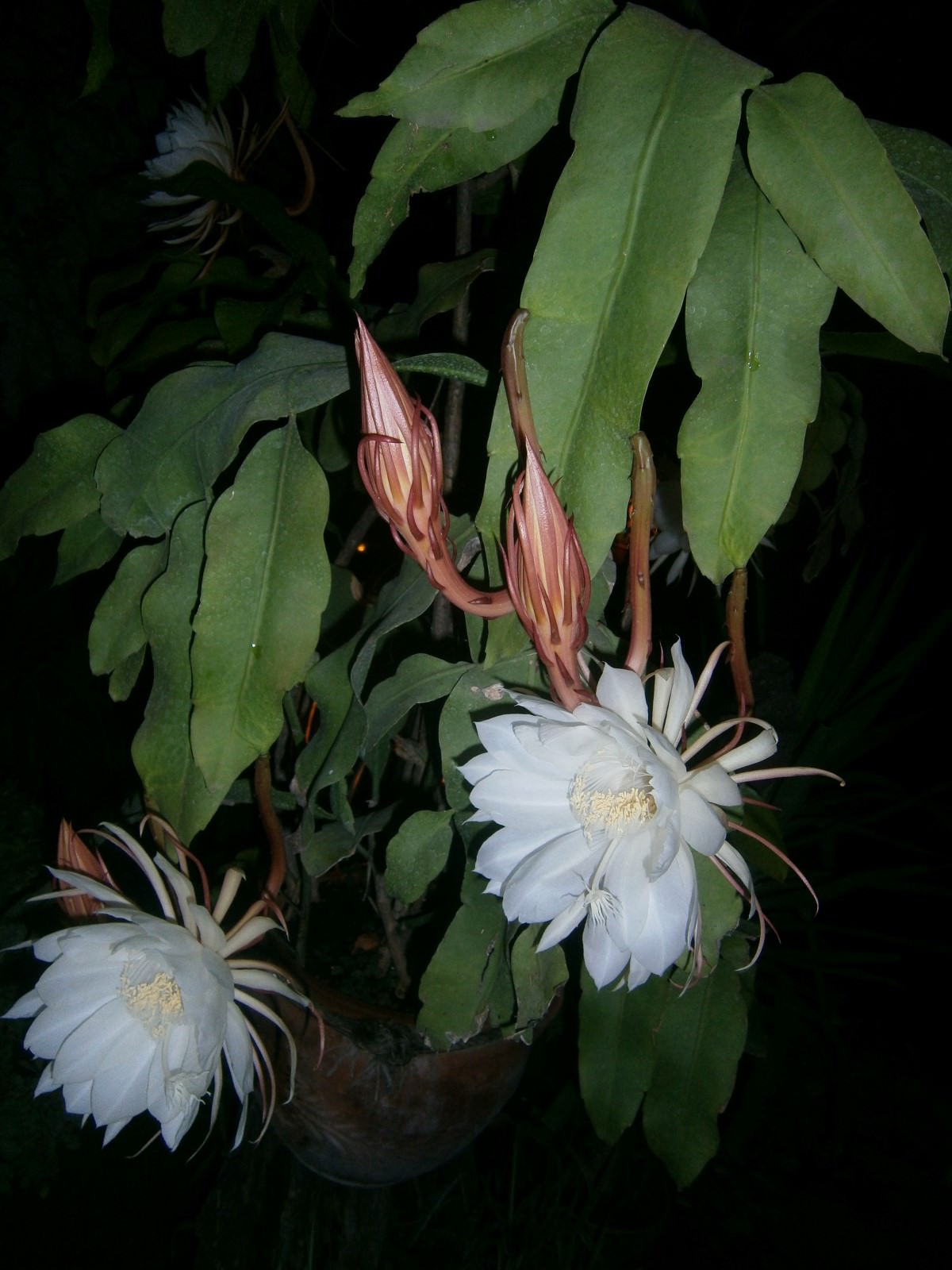
Epiphyllum oxypetalum (Queen of the Night) World of Succulents
Last Updated on July 8, 2023 Epiphyllum Oxypetalum, or more commonly known as the Queen of the Night, is a beautiful and unique plant that is native to Mexico. It gets its name from its large, white flowers that bloom only at night and have a sweet fragrance.
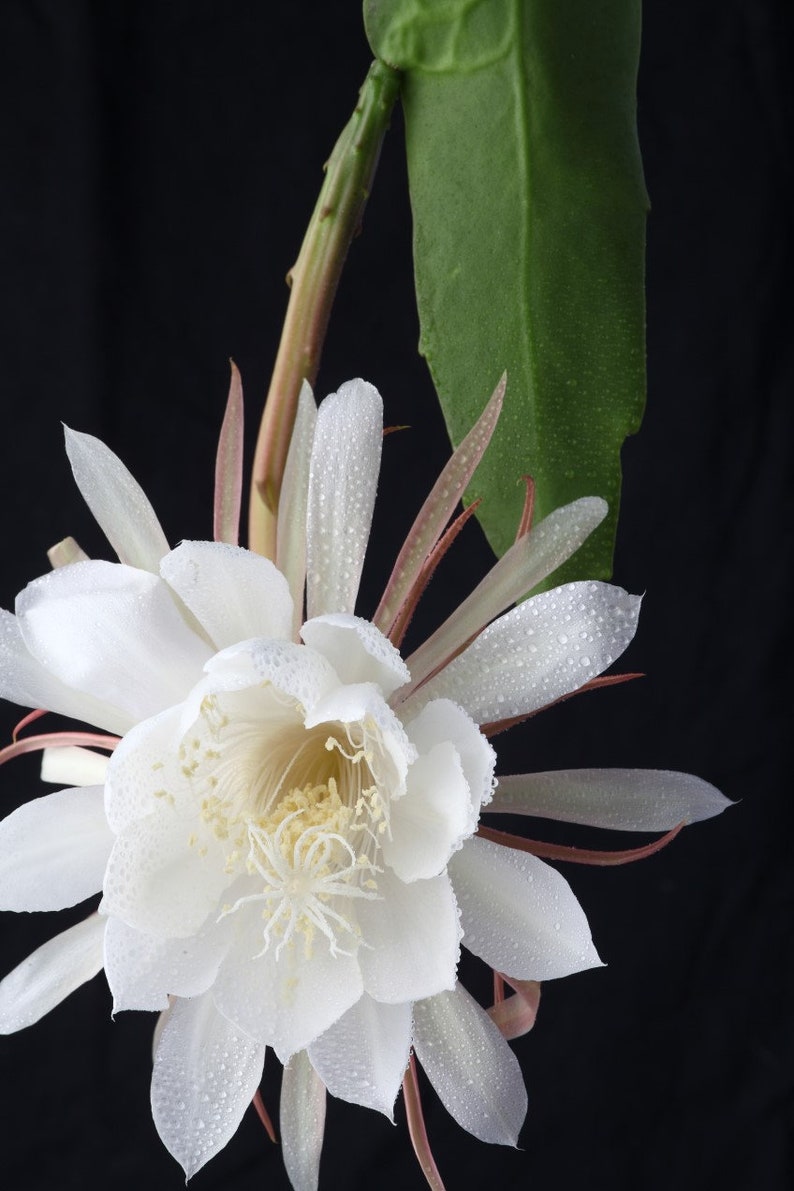
LIVE Epiphyllum oxypetalum Night Blooming Cereus Queen of the Etsy
5.5 to 6.5 is an ideal pH range for the Queen of the night's soil. Peat moss, pine bark, and sandy soil will support its growth because these soil types have excellent drainage. The roots of this plant don't need much space in the pot; in fact, they tend to grow more effectively when the roots are bound in the pot. Light

Queen of the Night Plant How to Care for Epiphyllum Oxypetalum in 2022 Orchid cactus, Plants
Epiphyllum oxypetalum (Dutchman's pipe cactus or queen of the night) is a species of cactus and one of the most cultivated species in the genus. E. oxypetalum blooms rarely and only at night, and its flowers wilt before dawn. Though it is sometimes referred to as a nightblooming cereus, it is not closely related to any of the species in the tribe Cereeae, such as Selenicereus, that are more.

Queen of the Night, Epiphyllum oxypetalum, 曇花 Night blooming flowers, Night flowers, Flowers
Isn't it spectacular! The photo below shows one of the two flowers that opened on the evening of September 4th. It also has a lovely scent. I didn't measure the flower since I was doing a time lapse video, but I estimate that the flower was 9-10 inches (about 23-25cm) in diameter. Fully open flower You can see both flowers that opened below.

Epiphyllum oxypetalum "Queen of the Night" 6" Sprout Home
Epiphyllum oxypetalum is known as the Queen of the Night because it only flowers at night and the blooms wilt and die before dawn. The flower also rarely blooms. The epiphyllum oxypetalum 'Queen of the Night' is sometimes confused with Night Blooming Cereus but it isn't part of the group.

Epiphyllum oxypetalum, Orchid Cactus 'Queen of the night' in GardenTags plant encyclopedia
Temperatures below 35℉ (1.7℃) can harm this plant. The potted ones can be brought inside the house but should be kept away from any vents or drafty windows that can be too extreme for the plant, even indoors. It is a good idea to bring the plant inside once the temperature drops to 40℉ (4.5℃).
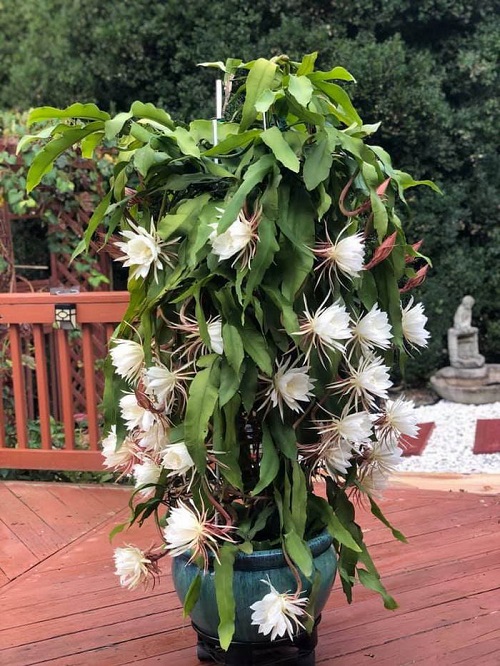
How to Grow Epiphyllum Oxypetalum Queen of the Night Care
Queen of the night is scientifically known as Epiphyllum oxypetalum. Colloquially, it is also referred to as the Dutchman's pipe cactus. Table Of Contents This plant is so easy to grow that it is the most cultivated species within its genus family of cacti.
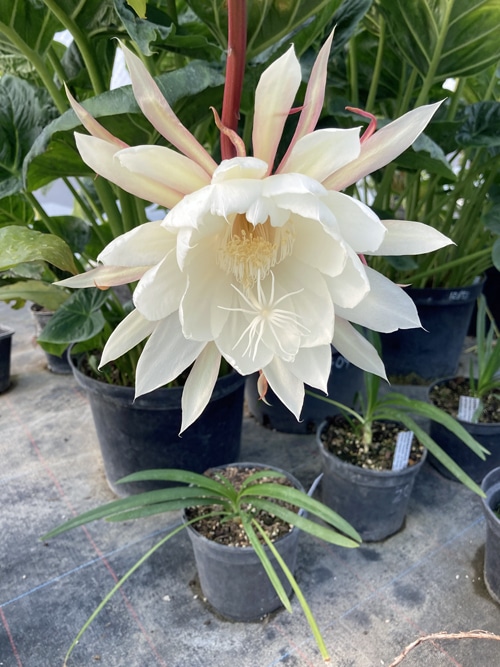
EPIPHYLLUM OXYPETALUM QUEEN OF THE NIGHT Cotswold Garden Flowers
Queen of the Night is a night-blooming, tropical epiphyte to lithophyte, an organism that grows on the surface of another plant and derives its moisture and nutrients from rain, the air and debris collecting on the organism. This member of the cactus family is the most cultivated species in the genus.

Epiphyllum Oxypetalum " Queen of the Night" r/succulents
Fast-growing, long-lived, and sweetly-scented, Epiphyllum oxypetalum (Queen of the Night) is an erect, then sprawling, epiphytic, or lithophytic, spineless cactus. Freely branching, it produces long, flattened green stems that can reach up to 20 ft. long (6 m).
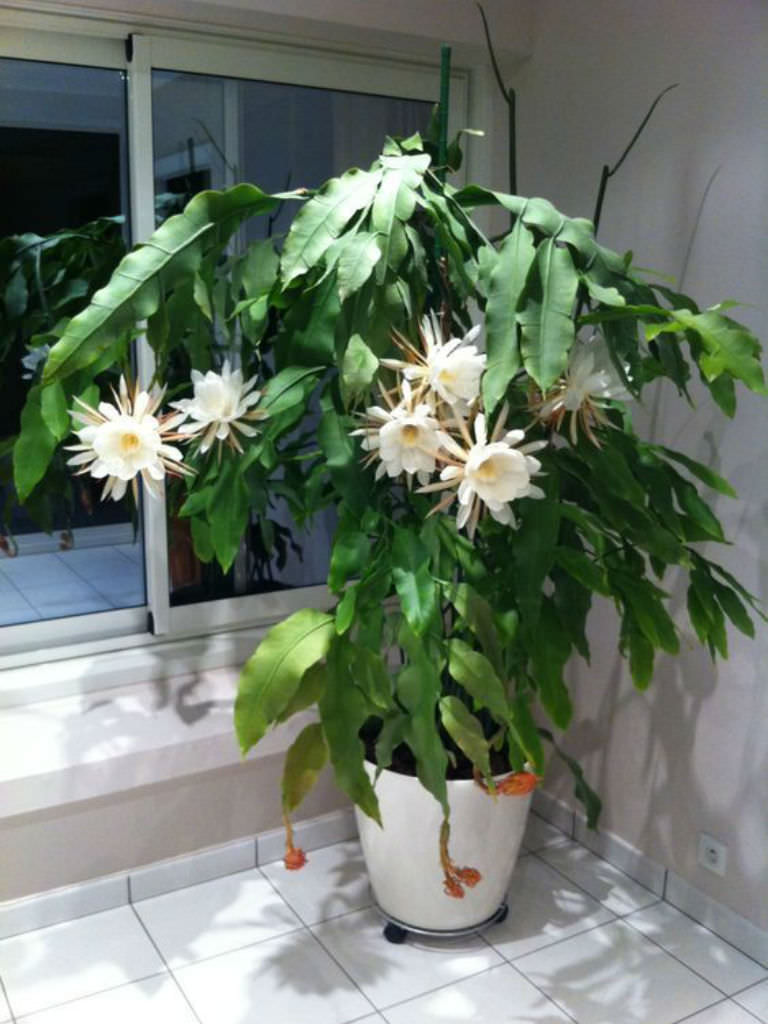
Epiphyllum oxypetalum (Queen of the Night) World of Succulents
Epiphyllum oxypetalum, the Dutchman's pipe cactus, [3] princess of the night or queen of the night, [4] is a species of cactus with a native range from Mexico to Nicaragua. [5] It blooms nocturnally, and its flowers wilt before dawn.

Queen of the Night Epiphyllum Oxypetalum ukhouseplants
The Queen of the Night Cactus, or Selenicereus oxypetalum, originates from southern Mexico and was first described by Adrian Haworth in the late 18th century as Epiphyllum oxypetalum. Epiphyllum comes from Latin words for 'upon' and 'leaf' that refers to its epiphytic nature. In contrast, Selenicereus derives from Greek to mean 'moon' (in.
My lovely Queen of the Night bloomed last night! (epiphyllum oxypetalum)
A Queen of the Night Cactus (Epiphyllum oxypetalum) needs to rest for 6-8 weeks during the winter for the flower buds to set in March. Keep the soil dry and do not feed the plant during this period. Place the plant in a cool, but not below 40°F (4.5°C ) dark area during this time.

Epiphyllum Oxypetalum Night Blooming Orchid Cactus Easy To Grow Bulbs
The Queen of the Night, Epiphyllum oxypetalum, is a cactus that rarely blooms, and when it does, only at night. Known also as the night-blooming cereus, this is a fast-growing and long-living spineless cactus. It stands erect and then sprawls. It's the most cultivated species of Epiphyllum, grown as an epiphytic houseplant.

Photo of the entire plant of Queen of the Night (Epiphyllum oxypetalum) posted by tabbycat
Take some cactus compost and place it in a container. Then scatter the seeds evenly over the soil. Mist the compost with water using a spray bottle and apply a thin layer of grit over it. Place the container in a clear plastic cover to keep it moist. After the seeds germinate, you can remove the covering.